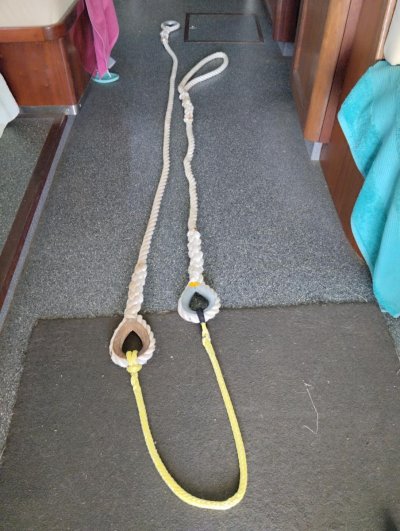C lectric
Guru
At anchor I have , as described above, used these rubber anchor snubbers and under some circumstances I have seen mine stretch enough that it is definitely working.
I first used them when we overstayed our weather welcome, 20-25 yrs ago, at a marina in Howe Sound.
The Northerly winds picked up overnight to about 50-60 K and we were being slammed around. THere was no way I was leaving the dock as I would have been slammed into other boats. The shock loads were enough the boat was leaning smartly and jerking HARD as the line stopped it from any further movement.
The day before I had seen the snubbers at the chandlery at the dock head so I went and bought one and installed it on a spare line which I could then secure the boat with.
As soon as that snubber came into play it smoothed out the snatch and no more jerking.
I went and purchased the other snubber.
THere have been other times they have come into play to take the snatch out of the lines coming up hard at the dock.
And mine are Taylor. I looked when I was at the boat.
I first used them when we overstayed our weather welcome, 20-25 yrs ago, at a marina in Howe Sound.
The Northerly winds picked up overnight to about 50-60 K and we were being slammed around. THere was no way I was leaving the dock as I would have been slammed into other boats. The shock loads were enough the boat was leaning smartly and jerking HARD as the line stopped it from any further movement.
The day before I had seen the snubbers at the chandlery at the dock head so I went and bought one and installed it on a spare line which I could then secure the boat with.
As soon as that snubber came into play it smoothed out the snatch and no more jerking.
I went and purchased the other snubber.
THere have been other times they have come into play to take the snatch out of the lines coming up hard at the dock.
And mine are Taylor. I looked when I was at the boat.
Last edited:

